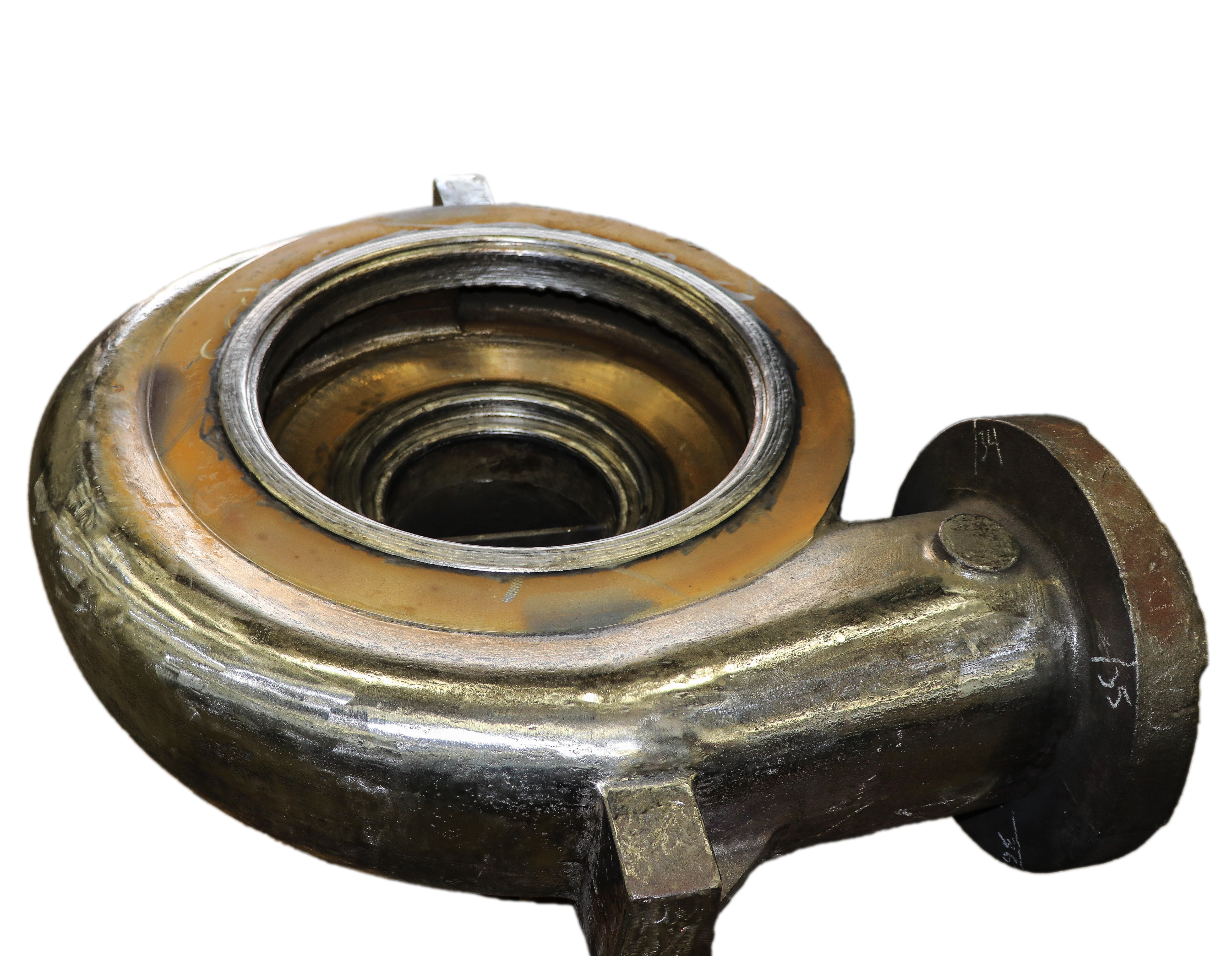Moving highly corrosive fluid at a large oil refinery requires special manipulation measures to protect both the personnel and equipment. At one Hydrofluoric (HF) Alkylation Unit, a pump casing in the depropanizer reflux service had suffered many years of wear and needed to be replaced. One company provided the casing rebuild.
Hydro, Inc. was able to manufacture a new casing for the backup pump. By coincidence, when it was delivered, the principal pump failed that same day and the newer casing was assembled and installed.
Background
The alkylation process, which produces alkylate, a premium gasoline blending stock, uses hydrofluoric acid as a catalyst. Hydrofluoric acid, a colourless solution of hydrogen fluoride in water, is a highly corrosive and toxic substance used for its capability of dissolving materials.
Depending on the fluid’s temperatures and pressures, HF is considered to be moderately reactive toward metals, which can lead to rapid corrosion of parts, equipment failure, and potentially dangerous safety hazards.
The HF Alkylation Unit at this plant has two process pumps for moving hydrofluoric acid. The main pump is in continuous service, while the second pump is used as a backup. Both pumps are overhung type 2 (OH2), manufactured in 1969. Hydro was contacted after the backup pump had been pulled out of service and disassembled in the refinery’s repair shop. The customer’s inspection of the pump’s casing revealed excessive wear and erosion.
The problem
During the initial inspection by Hydro’s team, the casing’s walls were found to be paper-thin and severely worn. Dimensional analysis of the volute cross-section also revealed hydraulic problems. The two fluid passages were found to be contorted, rough, and asymmetrical. These conditions appeared to have existed from the beginning and were probably caused either by design or manufacturing lapses.
Mechanically, it was discovered that the minimum wall thickness recommended by ASME Section III, Division I – NC was not met in several cross-sections of the pressure boundary, due to inadequate mounting-hole depths. Given the hazardous material being pumped, all these observations raised major safety concerns, which had to be addressed in the new casing design.
The solution
Hydro proposed delivering a new and upgraded casing with improved hydraulic passages, thicker walls, and updated corrosion protection. This solution took advantage of design and technological advances that occurred since this pump was first manufactured nearly 50 years ago. The new casing was also designed to be a drop-in, adapting to all the existing components such as cover and bearing housing without commanding any changes to them. To extend the life of the casing, the material selected was carbon steel overlaid with Monel 400, a nickel alloy that is resistant to corrosion.
Once the order was received, Hydro reverse engineered the existing case and conducted hydraulic configuration calculations. These calculations identified the best corrected volute profile meeting the current system requirements. The thickness of the casing was corrected, and the depths of the mounting holes were modified to make the casing safe, according to the current standards.
Finally, the gasket configuration was changed to a controlled compression design, which ensured application of proper bolt torque and tension, even and controlled crush of the gasket, perpendicularity between bores and faces while minimizing human error during installation, reducing installation time, and increasing safety by reducing chances of leakage.
The challenges
Several challenges were encountered during the execution of this project. The first challenge pertained to ensuring that the pump was a drop-in fit. Even though the existing components had been repaired, none of their dimensions were standard as a result of excessive wear. Inspection had to be very detailed and precise to ensure no fits were missed for a flawless drop-in.
The second challenge came from overlaying the carbon steel casing with Monel. Machining Monel is more difficult than machining steel because the material hardens very quickly once the work on it begins. Machining speeds for Monel are slow and material feeding rates are low, requiring patience and time.
The third challenge came from increasing the casing’s wall thickness which proved more difficult than anticipated. Due to two constraints: reusing the old pump components and fitting the casing in the same general volume as before, there was little room to increase the wall thickness.
The compromise that was reached was to shorten some bolts to allow for the thicker walls, while still ensuring adequate thread engagement. Bolt standardization was not possible anymore, but increased operational safety justified the decision. Finally, it took research and a presentation to obtain customer buy-in for the use of a controlled gasket compression design.
Conclusion
Hydro had committed to an 18-20 week delivery on this project, but managed to deliver the casing in 16 weeks. The day following the casing’s delivery, the main pump of the HF Alkylation Unit failed and had to be replaced on an emergency basis with the back-up service pump.
The pump, using Hydro’s new casing, was assembled with no problems and has been working since then, meeting all system requirements. Production at the refinery continued uninterrupted.
Finally, Hydro documented all the findings of the research pertaining to servicing HF pumps. The experience gained has been captured in an internal procedure, which will streamline future work on HF pumps.







